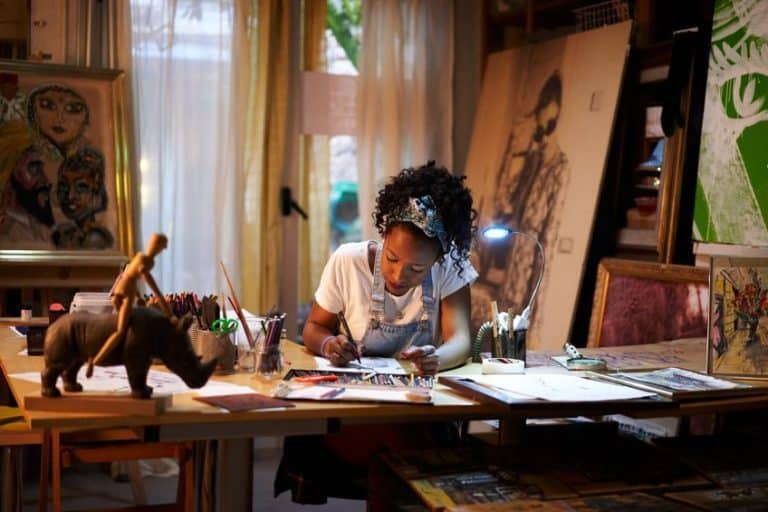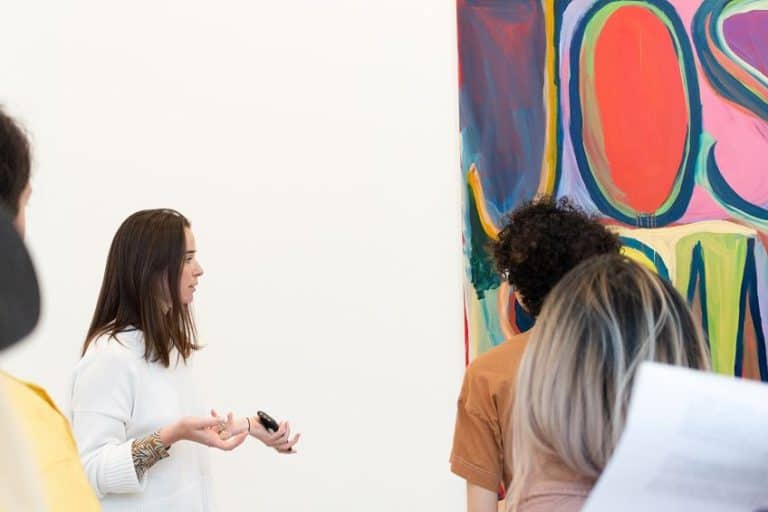What Is Curating in Art? – How to Curate Art Like a Professional
What is curating in art and what is an art curator’s role? Curating is the process of choosing, arranging, and presenting artworks for exhibit in a gallery, museum, or other art space. The institution’s art is usually managed by a curator and comprises artwork from its permanent collection. However, borrowed artworks are also often curated for special exhibits. Let us find out more about this specialized role and answer the question, “why is curating art important?”.
What Is Curating in Art?
What does curation mean and do you know how to curate art? If you are thinking of pursuing art curation as a potential career, then this article might provide some useful information about what the job entails. You might already have started your own collection, but does that mean you are already a curator, or is there more to it? What is the difference between curating and art collecting?
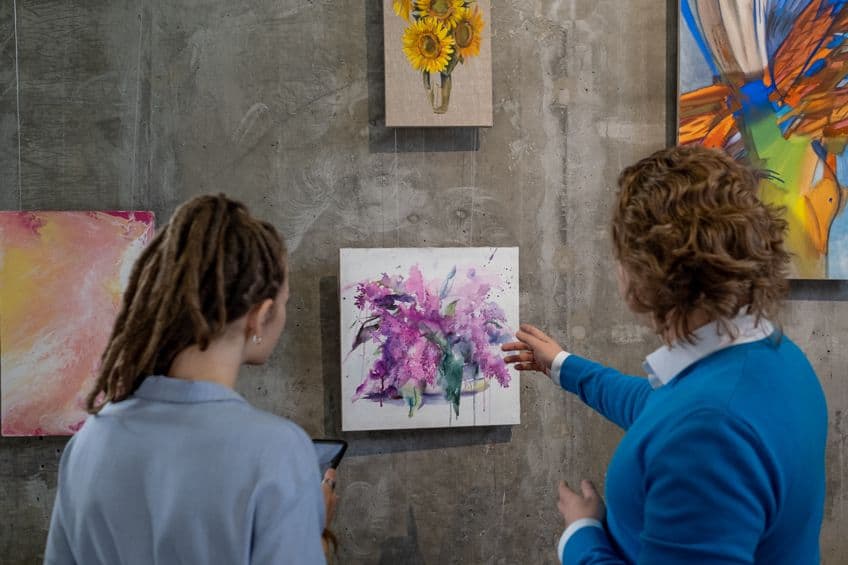
What Does Curation Mean?
So if all museums have an art collection, then what is the difference between curating and art collecting? A museum might have numerous works of art in its collection, but without placing them in some sort of context, their meaning might be lost or misinterpreted. A curator’s primary purpose is to interpret the artworks so that they can be arranged and presented in a manner that educates, informs, and inspires the audience.
Curators can approach the selection of which pieces to present in a variety of ways, both for a permanent collection and for temporary displays.
However, works are typically chosen based on subject, artist, period, and current relevance or appeal. They also contribute to the contextualization of art by putting artworks together to convey a message. Curators have a huge effect on the public’s impression of what is valued and relevant in the art world by selecting which pieces to exhibit. This contributes to the audience’s knowledge of the artwork and can enhance its value. Curation is also important in influencing other creative sectors. It contributes to the establishment of the rules and ideals that drive these areas, as well as to the promotion of young and upcoming artists, filmmakers, authors, musicians, as well as other creatives.
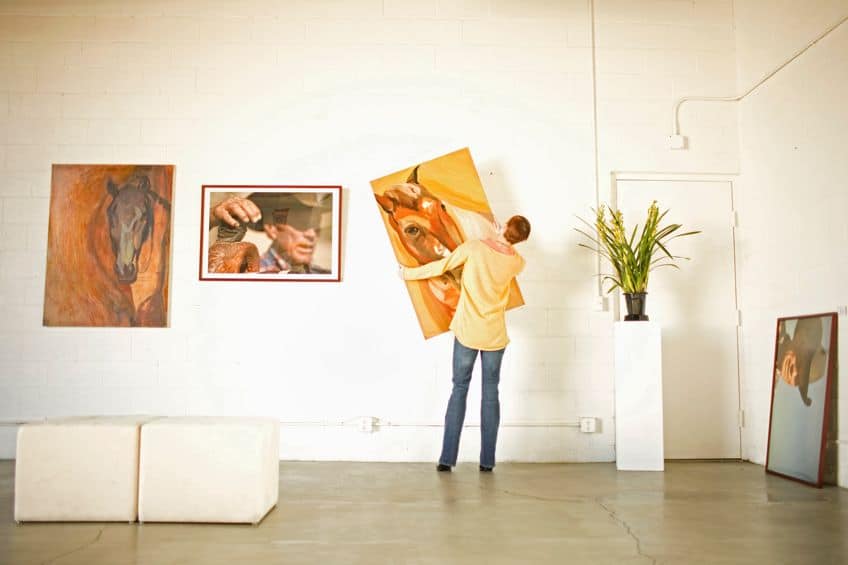
How to Curate Art
The curation of art is a process that requires several steps to achieve a cohesive collection of works. One first has to research what the artworks portray and what style they were created in, as well as information about the artist and the circumstances in which the artwork was created. This research will help the curator narrow down which works would be suitable for display in a certain exhibition.
Once the curator has chosen which pieces to use for an exhibition they will then decide how to arrange and present the artworks as a cohesive display.
Each artwork needs to be placed in a position that has the best angle and lighting to bring out the qualities of the piece. Sculptures, for instance, often need to be in places where they can be viewed from all angles, yet not disrupt the flow of foot traffic. A good presentation will assist in the contextualization and interpretation of these artworks by the public, for example, an art exhibit about a specific war can arrange the works in a chronological order that educates the viewer on the timeline of events as they walk through the exhibition.

The Benefits of Art Curation
There are several benefits to art curation, not only for the museum or artist, but for society at large. One of the benefits of art curation is that it enhances cultural awareness. Curators can display artworks and concepts that reflect many nationalities, art movements, and historical periods. This contributes to broadening the public’s awareness of the global culture and promoting cross-cultural interaction and conversation. Curation also serves to preserve cultural heritage.
One of the fundamental ways that art curation protects cultural heritage is through the collection and preservation of artworks that are significant to a certain historical era or associated culture.
Curators can preserve these artworks by collecting them, ensuring that they are not stolen, destroyed, or lost. Curators stimulate critical thinking and inspire audiences to explore different viewpoints by showcasing artworks that question traditional ideas and explore beyond the boundaries imposed on them. Well-curated displays assist in educating the masses on the importance of art as well as provide insight into the subject matter that drove the artists to create their works.

The Challenges of Art Curation
As with any line of work, curation can be difficult at times and art curators are faced with certain daily challenges that determine how well-received their curated displays will be. One of the greatest challenges facing curators is trying to find a balance between what audiences would enjoy and their own personal tastes in art. However, while audiences might have their preferences, they are largely uneducated when it comes to art, and part of a curator’s job is to introduce the public to good art based on their educated opinion and informed tastes.
There are also certain ethical issues that curators need to consider, such as ensuring that the artworks are not offensive, that they accurately portray ethnicities, and that they are inclusive.
There are also certain ethical considerations regarding where the artworks are sourced from as many museums have looted artifacts in their collections. It is also important that the curator has their finger on the pulse of the ever-changing art environment and is aware of which artists and styles are currently popular with the public, critics, and artists. Being able to listen to often negative feedback can also be challenging, but can help a curator fine-tune an exhibit if acknowledged and acted upon. Collaborating with other often temperamental artistic types can be challenging too, but also offers an opportunity for fresh creative ideas and projects.
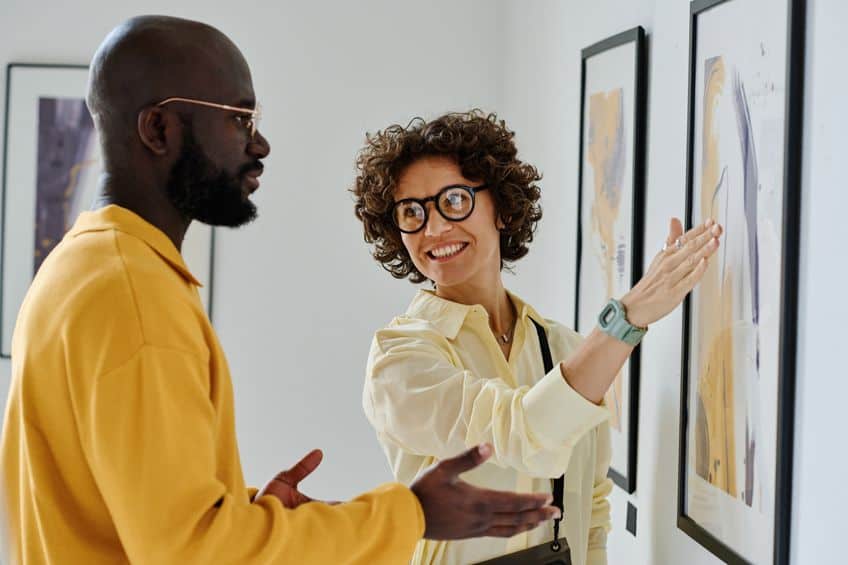
If you want to learn how to curate art yourself, and perhaps pursue it as a career, then you should maybe consider doing a course on art history. Or you can approach a museum and gallery and find out if they offer internship positions or a lower-level job at the institution. This will provide you with the hands-on experience required to learn everything you need to become a curator. Although art curators are faced with many challenges, they also are in a position to impact the world around them by selecting talented artists whose works impart significant stories which have the ability to educate and inspire those who view them. Curators can help educate newcomers on the masters, as well as shed light on the emerging generation.
Frequently Asked Questions
What Is Curating in Art?
If you have ever stepped into a gallery or museum, you might have noticed that all the artworks and artifacts are categorized in some way – either by time period, style, or art form. If the arrangement and presentation of the display felt natural, cohesive, and imparted a clear narrative, then the chances are that the institution has employed a good curator. Curating in art involves selecting which artworks one will use in a specific exhibition, based on the theme of the exhibit.
What Is an Art Curator?
An art curator must choose the appropriate artworks to be displayed in an exhibit for a gallery or museum, or any other such art display. Their job entails researching the pieces in the collection and deciding which pieces best suit the theme. The artworks must be arranged in a manner that makes sense of the works, not only as individual pieces but as an exhibit overall. This will help contextualize the exhibit and assist in the viewer’s interpretation of the works.
Why Is Curating Art Important?
Art curation can help to enhance public awareness of art by displaying works in a manner that gives them meaning and context. While both Claude Monet and Banksy are regarded as good artists, it would not make sense to have their works displayed side by side in an exhibit. In fact, without context, it can make both pieces look bad in comparison to each other. However, when works are displayed with other works created by the same artist, or artists within the same movement, we begin to get a better overall understanding of the exhibit’s theme, and the artworks’ meaning and significance. Art curation is equally important in educating the public about old classic works as it is in exposing the public to new artists.
What Is the Difference Between Curating and Art Collecting?
Most art institutions have much more art in their archives than they actually put on display. This is because certain pieces will be on permanent display, while others will be temporarily displayed based on the theme of a certain exhibit. A curator needs to go through a gallery’s collection and select the appropriate works that will best suit a certain exhibit. Having a large collection is one thing – but knowing which will be best suited, and displaying them in a way that tells the best story – is an art all on its own.
Nicolene Burger is a South African multi-media artist, working primarily in oil paint and performance art. She received her BA (Visual Arts) from Stellenbosch University in 2017. In 2018, Burger showed in Masan, South Korea as part of the Rhizome Artist Residency. She was selected to take part in the 2019 ICA Live Art Workshop, receiving training from art experts all around the world. In 2019 Burger opened her first solo exhibition of paintings titled, Painted Mantras, at GUS Gallery and facilitated a group collaboration project titled, Take Flight, selected to be part of Infecting the City Live Art Festival. At the moment, Nicolene is completing a practice-based master’s degree in Theatre and Performance at the University of Cape Town.
In 2020, Nicolene created a series of ZOOM performances with Lumkile Mzayiya called, Evoked?. These performances led her to create exclusive performances from her home in 2021 to accommodate the mid-pandemic audience. She also started focusing more on the sustainability of creative practices in the last 3 years and now offers creative coaching sessions to artists of all kinds. By sharing what she has learned from a 10-year practice, Burger hopes to relay more directly the sense of vulnerability with which she makes art and the core belief to her practice: Art is an immensely important and powerful bridge of communication that can offer understanding, healing and connection.
Nicolene writes our blog posts on art history with an emphasis on renowned artists and contemporary art. She also writes in the field of art industry. Her extensive artistic background and her studies in Fine and Studio Arts contribute to her expertise in the field.
Learn more about Nicolene Burger and the Art in Context Team.
Cite this Article
Nicolene, Burger, “What Is Curating in Art? – How to Curate Art Like a Professional.” Art in Context. July 10, 2023. URL: https://artincontext.org/what-is-curating-in-art/
Burger, N. (2023, 10 July). What Is Curating in Art? – How to Curate Art Like a Professional. Art in Context. https://artincontext.org/what-is-curating-in-art/
Burger, Nicolene. “What Is Curating in Art? – How to Curate Art Like a Professional.” Art in Context, July 10, 2023. https://artincontext.org/what-is-curating-in-art/.





